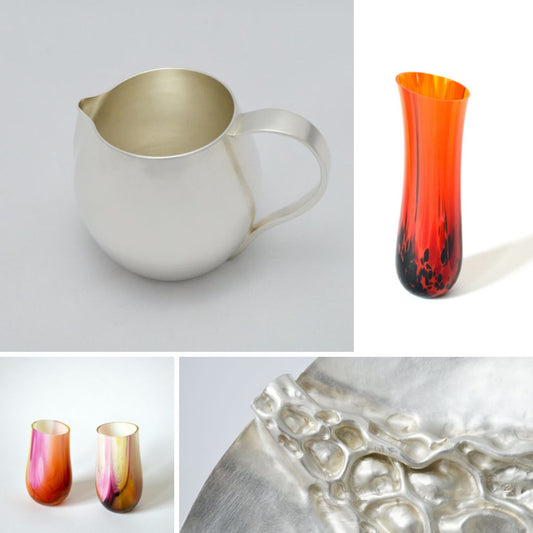With our summer exhibition in full swing, we wanted to introduce you to a few of the printmaking techniques that you’ll see when you visit.
This is the first time we’ve had so many different techniques on display and some are better known than others. Let our quick guide explain how each is made.
Aquatint etching

You have probably heard of etching and you’ve probably seen etchings in old books. Etching is an intaglio printmaking process, using acid to cut into unprotected parts of a metal place to create a design. Ink is applied to the plate, which is then wiped clean, leaving the ink in the recesses.
The inked plate is placed on the bed of an etching press and covered with a damp sheet of paper. After it is run through the press, the paper pulls the ink from the plate to create the image.
Aquatint etching, as practised by Kitty Watt, is similar but a bit different. It creates tonal effects on the plate rather than lines.
To do this, the plate is covered with a special acid-resistant powder, called rosin, and heated to adhere the substance to the plate. With the plate now ready, the artist can create their design by stopping out areas.
Depending on the length of time that each area is exposed to the acid, the artist can produce a range of tones. Using coloured ink, produced an effect much like a watercolour wash.
Screenprinting

This is a widely used printing technique, often used for printing on fabric. It involves creating images or patterns by pressing ink through a stencil or mesh screen.
The stencil is made on a mesh screen, blocking out certain parts of the screen and allowing ink to pass through only the unblocked areas.
When printing, the screen is placed onto the substrate – the material you are printing on – and a squeegee is used to press ink through the openings. If the design has multiple colours, a separate screen and stencil are used for each colour.
This builds up different layers, producing variegated image – as you can see in Esther Tyson’s prints and Georgia Rose Murray’s dramatic Arctic landscape.
Cyanotype

Cyanotype creates a distinctive blue image, traditionally made by laying objects onto specially coated paper and exposing them in the sunshine.
The paper is coated with a chemical solution, objects placed and exposed to ultraviolet light. When the paper is washed, the image is fixed.
Jess Greaves used her own negatives to create her images. To add to the intrigue of her pieces, she also printed on Lokta paper, which is handmade in Nepal, using the Lokta bushes that grow in the Himalayan forests between 5,000ft and 13,000ft.
You can see these artworks and more at the studio now. The Mountains are Calling runs through the summer and we're open Tuesday to Saturday, 10am-5pm.




